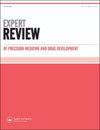精准医学时代治疗中枢神经系统淋巴瘤
IF 1.2
Q4 PHARMACOLOGY & PHARMACY
Expert Review of Precision Medicine and Drug Development
Pub Date : 2020-06-16
DOI:10.1080/23808993.2020.1777853
引用次数: 1
摘要
原发性中枢神经系统淋巴瘤(PCNSL)是一种罕见的淋巴结外非霍奇金淋巴瘤,绝大多数病例属于弥漫性大b细胞淋巴瘤(DLBCL)。标准的一线治疗是基于高剂量甲氨蝶呤(HD-MTX)方案。然而,大多数患者会复发,导致疾病预后不良。所涵盖的领域综述了PCNSL潜在的新治疗方法。随着量身定制治疗的出现,免疫调节剂和免疫疗法正成为治疗这种孤儿疾病的新方法。本综述旨在总结目前正在评估的新方法。专家意见随着PCNSL分子改变的描述,PCNSL的治疗管理正在迅速发展。然而,由于这种疾病的罕见性,使用新的治疗药物的III期临床试验仍然缺乏。此外,绝大多数新诊断的PCNSL影响的是老年患者,针对这一脆弱人群的特异性和适应性临床试验是有必要的。目前,靶向治疗或免疫介导治疗仅在复发/难治性(R/R) PCNSL中进行了研究,但将这些方法作为一线治疗(与HD-MTX相比)也可以作为新的有希望的方法来降低MTX方案相关的毒性。本文章由计算机程序翻译,如有差异,请以英文原文为准。
Treating central nervous system lymphoma in the era of precision medicine
ABSTRACT Introduction Primary central nervous system lymphoma (PCNSL) is a rare extra-nodal non-Hodgkin lymphoma that in the vast majority of cases belongs to diffuse large B-cell lymphoma (DLBCL) histology. The standard first-line treatment is based on high-dose methotrexate (HD-MTX) regimens. However, the majority of patients will relapse, leading to a poor prognosis of the disease. Areas covered Reviewed are the potential new therapeutic approaches in PCNSL. With the advent of tailored treatment, immunomodulators and immunotherapies are appearing as new promising therapeutic approaches for this orphan disease. This review seeks to summarize the novel approaches currently under evaluation. Expert opinion The therapeutic management of PCNSL is rapidly evolving with the description of PCNSL molecular alterations. However, due to the rarity of this disease, phase III clinical trials using new therapeutic drugs are still lacking. In addition, the vast majority of newly diagnosed PCNSL affect elderly patients, and specific and adapted clinical trials for this fragile population are warranted. Currently, the use of targeted therapies or immune-mediated treatments is only studied in relapsed/refractory (R/R) PCNSL, but the use of these approaches as a first-line treatment (compared with HD-MTX) could also be used as new promising approaches to decrease the toxicity associated with MTX regimens.
求助全文
通过发布文献求助,成功后即可免费获取论文全文。
去求助
来源期刊

Expert Review of Precision Medicine and Drug Development
PHARMACOLOGY & PHARMACY-
CiteScore
2.30
自引率
0.00%
发文量
9
期刊介绍:
Expert Review of Precision Medicine and Drug Development publishes primarily review articles covering the development and clinical application of medicine to be used in a personalized therapy setting; in addition, the journal also publishes original research and commentary-style articles. In an era where medicine is recognizing that a one-size-fits-all approach is not always appropriate, it has become necessary to identify patients responsive to treatments and treat patient populations using a tailored approach. Areas covered include: Development and application of drugs targeted to specific genotypes and populations, as well as advanced diagnostic technologies and significant biomarkers that aid in this. Clinical trials and case studies within personalized therapy and drug development. Screening, prediction and prevention of disease, prediction of adverse events, treatment monitoring, effects of metabolomics and microbiomics on treatment. Secondary population research, genome-wide association studies, disease–gene association studies, personal genome technologies. Ethical and cost–benefit issues, the impact to healthcare and business infrastructure, and regulatory issues.
 求助内容:
求助内容: 应助结果提醒方式:
应助结果提醒方式:


